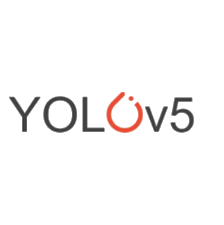

Data Documentation Initiative
Another well-known standard is the "Dublin Core Metadata Initiative" (DCMI), which provides a set of metadata terms for describing resources, including datasets. The DCMI standard is more general and applicable to a wide range of resources beyond just datasets.
In addition to these general standards, there are also domain-specific standards for dataset classification. For example, in the field of biology, the "Minimum Information About a Microarray Experiment" (MIAME) standard provides guidelines for describing microarray datasets. Similarly, the "Functional Genomics Experiment" (FuGE) standard is used for describing functional genomics datasets.
It's worth noting that while these standards provide guidelines and recommendations, they are not always followed universally. Different organizations and researchers may have their own practices for dataset classification and documentation.
Face Recognition System
To train a face recognition system, you typically need a dataset that includes images or videos of faces along with corresponding labels or annotations. The data should cover a wide range of facial variations to ensure the system can generalize well to different individuals, poses, lighting conditions, and expressions. Here are some types of data commonly used for training face recognition models:
-
Face Images: High-quality images of faces captured under different conditions are essential. It's beneficial to have a diverse dataset that includes faces of different races, ages, genders, and with variations in facial hair, glasses, and other accessories. The images can be grayscale or color.
-
Identity Labels: Each face image in the dataset should be associated with the correct identity label, which indicates the person depicted in the image. Identity labels enable the model to learn to differentiate between different individuals.
-
Annotations: Annotations can provide additional information about the face regions, such as facial landmarks (e.g., eyes, nose, mouth), bounding boxes, or other facial attributes (e.g., emotions, gender). These annotations can be used to train models for more specific face recognition tasks or to enable facial feature extraction.
-
Variations and Augmentations: It's beneficial to introduce variations in the dataset to enhance the model's ability to handle different conditions. This can include variations in pose, lighting, background, and expressions. Data augmentation techniques, such as cropping, resizing, rotation, flipping, and adding noise, can be applied to artificially increase the diversity of the training set.
-
Large-Scale Dataset: Having a large and diverse dataset can improve the model's performance and generalization. The dataset can consist of thousands to millions of face images, capturing a broad spectrum of facial characteristics and environmental factors.
"Explore the data requirements for training face recognition systems, including face images, identity labels, annotations, variations, and large-scale datasets."
Keywords: Face recognition, Dataset, Training data, Face images, Identity labels, Annotations, Facial variations, Pose variations, Lighting conditions, Expression variations, Diversity, Augmentation techniques, Large-scale datasets, Facial landmarks, Facial attributes, Ethical considerations, Privacy protection, Data protection regulations, Facial feature extraction,Model performance
